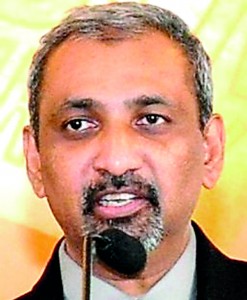Getting ready for the ‘Internet of Things’
Over the last several years, stories of the technologies making up the “Internet of Things” (IoT) have started to slip into the public consciousness. As this is occurring, we believe the whole story of Smart Systems and the IoT has not yet been told. Smart, connected systems are a technological and economic phenomenon of unprecedented scale, encompassing billions if not trillions of nodes – an Internet of infinite interactions and values. Analysts predict that over 50 billion devices and objects will be connected to the Internet by 2020. Yet, today, more than 99 per cent of things in the physical world remain unconnected.

Sujit Christy
Imagine a world where billions of objects can sense, communicate and share information, all interconnected over public or private Internet Protocol (IP) networks. These interconnected objects have data regularly collected, analysed and used to initiate action, providing a wealth of intelligence for planning, management and decision making. The world of “Internet of Everything” (IoE) is the networked connection of people, process, data, and things. IoT will be the next technology transition, when devices will allow us to sense and control the physical world. It’s also part of something even bigger.
Smart Systems and IoT are driven by a combination of Sensors and Actuators, Connectivity, People and Processes. Sensors and Actuators give our world a digital nervous system using location data using GPS sensors, eyes and ears using cameras and microphones, along with sensory organs that can measure everything from temperature to pressure changes. Examples include Position/Presence/Proximity, Motion/Velocity/Displacement, Temperature, Humidity / Moisture, Acoustic / Sound / Vibration, Chemical / Gas, Flow, Force / Load / Torque / Strain / Pressure, Leaks / Levels, Electric / Magnetic, Acceleration / Tilt and Machine / Vision / Optical / Ambient Light.
The above inputs are digitised and placed on networks using Connectivity.
Examples of connectivity will be a combination of PAN – Personal Area Network (802.15), LAN – Local Area Network (802.11), MAN – Metropolitan Area Network (802.16), WAN – Wide Area Network (802.20), IPV4, IPv6, UDP, Telnet, MOTT, DDS, CoAP, AMPP, HTTP, SOCKETS, REST and API, Printed, Ethernet, Power line, RFID, ANT, NFC, GLoWPAN, ZIGBEE, Z-WAVE, UWB, Bluetooth, Wi-Fi, DASH 7, License Free Spectrum, WiMAX, Weightless, 2G/GSM/EDGE/CDMA/EVDO, 3G – GPS/GPRS, Cellular 4G, LTE Advanced and Inter Planetary Network. The networked inputs can then be combined into bi-directional systems that integrate data, people, processes and systems for better decision making.
With more physical objects and smart devices connected to the IoT landscape, the impact and value that IoT brings to our daily lives will become more prevalent. The growth and convergence of processes, data, and things on the Internet will make networked connections more relevant and valuable than ever before, creating unprecedented opportunities for industries, businesses, and people. People will be able to make better decisions such as taking the best routes to work or choosing their favourite restaurant. New services can emerge to address society’s challenges, such as remote health monitoring for elderly patients / parents and similar pay-as-you-use services.
For government, the convergence of data sources on shared networks improves nation-wide planning, promotes better coordination between agencies and facilitates quicker responsiveness to emergencies and disasters. IoT will connect new places -such as energy grids, healthcare facilities and transportation systems – to the Internet. When an object can represent itself digitally, it can be controlled from anywhere. This connectivity means more data, gathered from more places, with more ways to increase efficiency and improve safety and security. For enterprises, IoT brings about tangible business benefits from improved management and tracking of assets and products, new business models and cost savings achieved through the optimisation of equipment and resource usage.
A common first step towards the IoT will be to convert networks on proprietary protocols to IP-based networks. For enterprises, it requires partnerships between operational technology and IT to address security, performance, and interoperability. The interactions between these entities will create new types of smart applications and services. IoT will transform every industry, locally and globally. It will bring networking technology to places where it was once impractical or even just unavailable. The challenge will be to build the right infrastructure. Companies will face changing requirements of scale and data management, and a need for standards-based infrastructure that is highly secure and interoperable.
The benefit will be derived from the compounded impact of these connections and the value it creates as ‘everything’ comes online. The potential value will be tremendous. How much an organisation can achieve depends on its ability to capture technology transitions, such as cloud, mobility, collaboration, and the “Internet of Things”. These transitions can turn information into actions that create new capabilities, richer experiences, and unprecedented economic opportunity for businesses, governments and people.
(The writer is a Governance, Risk and Compliance professional and Director at Layers-7 Seguro Consultoria (Pvt) Ltd. He can be emailed at sujit@layers-7.com).


